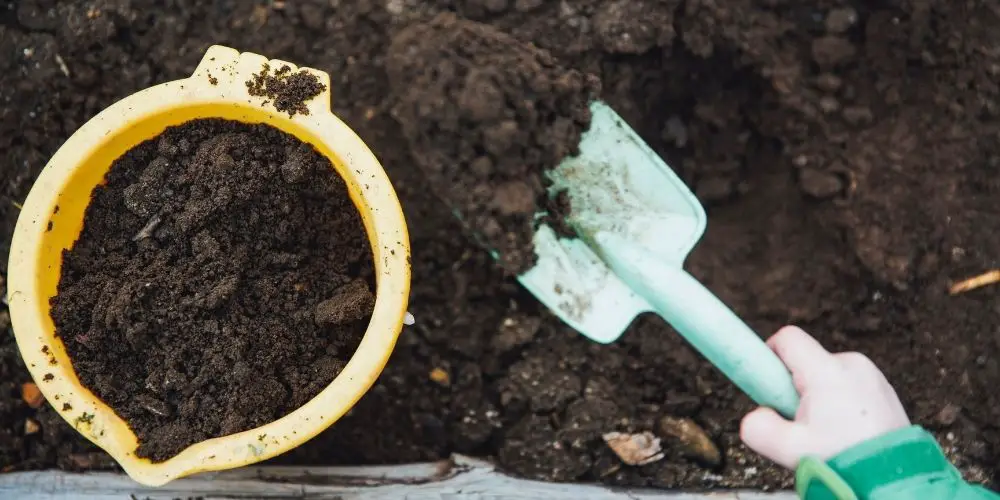Different types of digging require different shovels. If you’re looking for a shovel that’s perfect for all occasions, consider buying one with multiple uses. The type and size of hole you want to make determine the right kind of shovel to use.
Main shovel categories for different kinds of holes
Square drive shovel
These types of shovels are flat on the bottom and square-shaped, which means they can be driven into the ground without slipping out of your hand, making them particularly useful if you will be working in areas with a lot of rocks or other sharp objects underfoot such as gravel or sand. These shovels are usually small enough to be operated one-handed, but some larger models exist for people who have limited strength in their hands.
This type of shovel is best suited for digging trenches, holes around posts, postholes, etc. Prices vary depending on the material used, with hard plastic being cheapest, steel shovels running about $15-20, and aluminum being the most expensive, with prices running upwards of $45.
Trench shovel
Trench shovels are also flat bottomed and square, but they have a much deeper straight edge than a square drive shovel which allows them to be driven into the soil without sliding out of your hands and scooping up loose earth, gravel or sand more easily.
These shovels are usually only available in steel form and can vary significantly from 1 cubic foot to 2 cubic feet. However, this is going to influence the price considerably. The best thing about trench shovels is that their deep straight edges make them very useful for cutting through sod, roots, etc., when you need to move plants around once they’re dug up.
Round point shovel

Round point shovels are essentially just round shaped trench shovels, so they have the same benefits as a trench shovel but with the added benefit of being able to pick up larger rocks or soil clumps with them without having to use both hands like you would need to on say a square drive or Trench Shovel.
Because of this, these types of shovels work best for people who only have limited time to get their gardening done before they leave for work in the morning. These shovels cost about $15-20 and are available in both steel and aluminum form, depending on the brand.
Square point shovel
These types of shovels can be used for moving large amounts of loose dirt, gravel, or sand around with them, making them very useful for digging holes in the desert or on beaches where you have to contend with lots of coarse material being moved around.
They are essentially just square drive shovels that have been flattened horizontally, so they’re not as thick, and since they don’t go straight down into the ground like a trench shovel, they’re less likely to get stuck between rocks, etc.
Rake tines
Rake tines are essentially long flat pieces of steel or aluminum with little notches cut out of them tapering off toward one end. Both landscapers and gardeners use these types of Shovels are used by both landscapers and gardeners alike for removing weeds from gardens because their sharp serrated edges make quick work of weeds and grasses. In contrast, their flat surface makes them useful for clearing beds, breaking up soil clumps, moving rocks, etc.
These Shovels usually come with a square drive head on the other end, which is used to drive the rake tines into the ground before you pull out on them (like turning an anchor).
- Why Slinky Garden Hoses are the Best Kinds of Hoses? Or are they?
- What kind of soil do Lemon Trees need?
- What are the Different types of tomato plants?
How much do different kinds of shovels cost
Considering all these factors, you’ll find that the price range for a decent-quality shovel goes from about $30 up to over $100.
A higher price doesn’t necessarily always mean better quality or performance either – it’s important to look at the full picture, including things such as warranty length and any special features included in particular models. That being said, though, there are some general rules when it comes to choosing an expensive or cheap option:
- Cheap shovels: Under $20
- Medium range: Between $20 and $40
- Expensive: Over $40
Things to keep an eye out for when shopping for these shovels
- Most shovels that come with warranties will only cover defects in workmanship and materials, not damage caused by improper use or accidents. Always read manufacturers’ warranty information. Keep your receipts in case any problems do arise before your warranty expires (usually one year on most shovels)
- If purchasing online, make sure you know who provides customer service and whether there’s a physical store you can go to if you need a refund or a repair. You don’t want to purchase something online only to find out later that the warranty is useless because there’s no way for you to get it serviced.
- Aluminum shovels are not as strong as steel, but they’re much lighter, making them great for people who have to carry their shovels around once they’ve been used. If carrying your shovel around after use is very important for you, an aluminum shovel might be good.
Conclusion
A shovel can be used for both digging holes and moving dirt. If you need to dig a hole in the sand or dry, loose soil, use the scooping action of your shovel blade. For wetter soils, use the spade side of the blade to push down into the earth before lifting out with a lever-like motion. The type of material dug through will determine which style should be utilized more than anything else.















